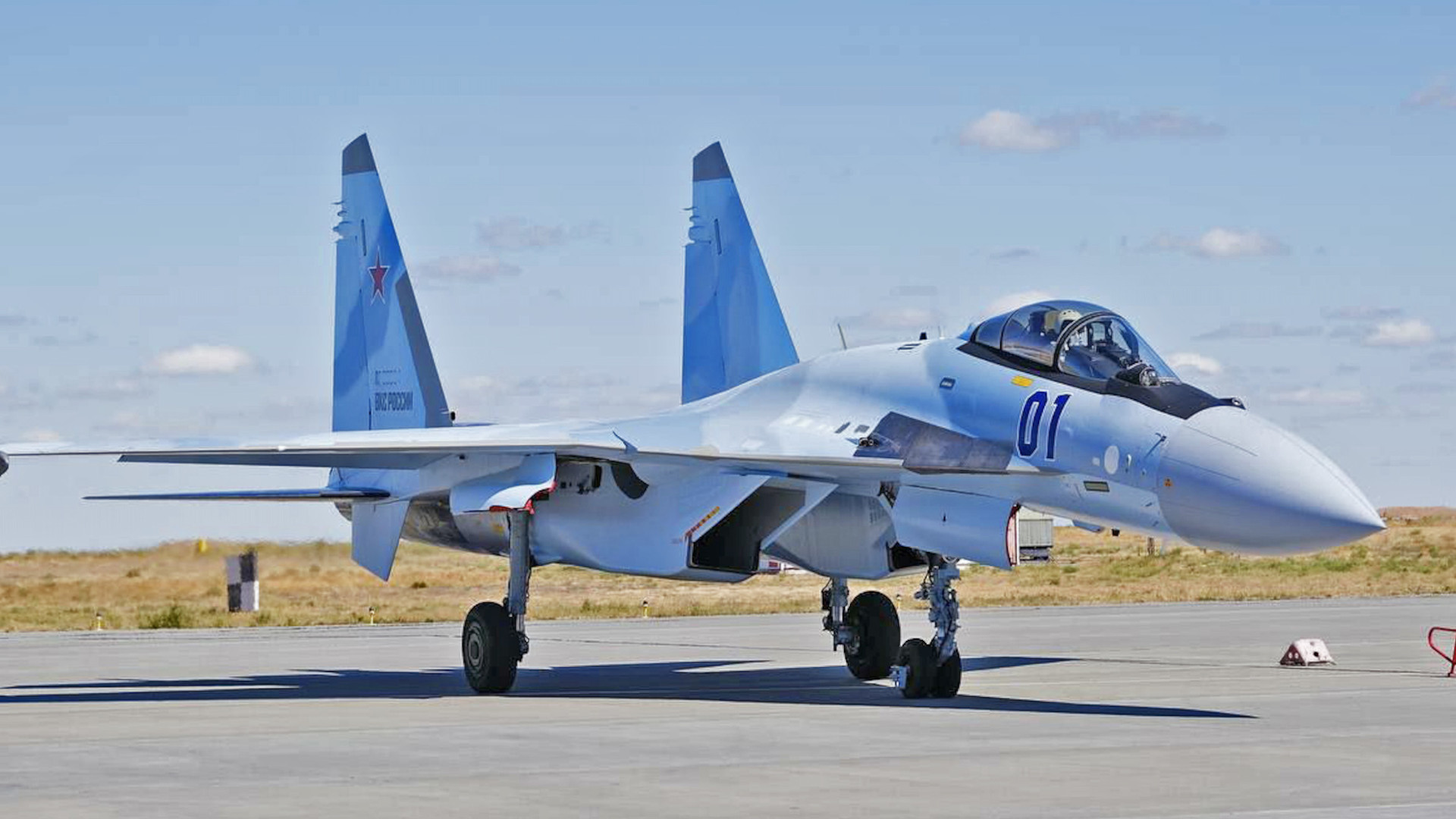With Russian airpower still very much embroiled in the war in Ukraine, the country’s little-known aggressor squadron recently took delivery of its first Su-35S Flanker-Ms — the most advanced fighter jets in frontline service with the Russian Aerospace Forces, or VKS. Experiences from the current conflict in Ukraine suggest that overhauling the air combat training capabilities of the VKS is badly needed, and the Su-35S might now be expected to help achieve that goal.
The three newly built Su-35S jets departed the Sukhoi factory airfield, or KnAAPO, in Komsomolsk-on-Amur in the Russian Far East on September 9. The next day, following three stopovers, they touched down at Privolzhsky in the Astrakhan region of southern Russia, after covering a distance of around 3,850 miles.
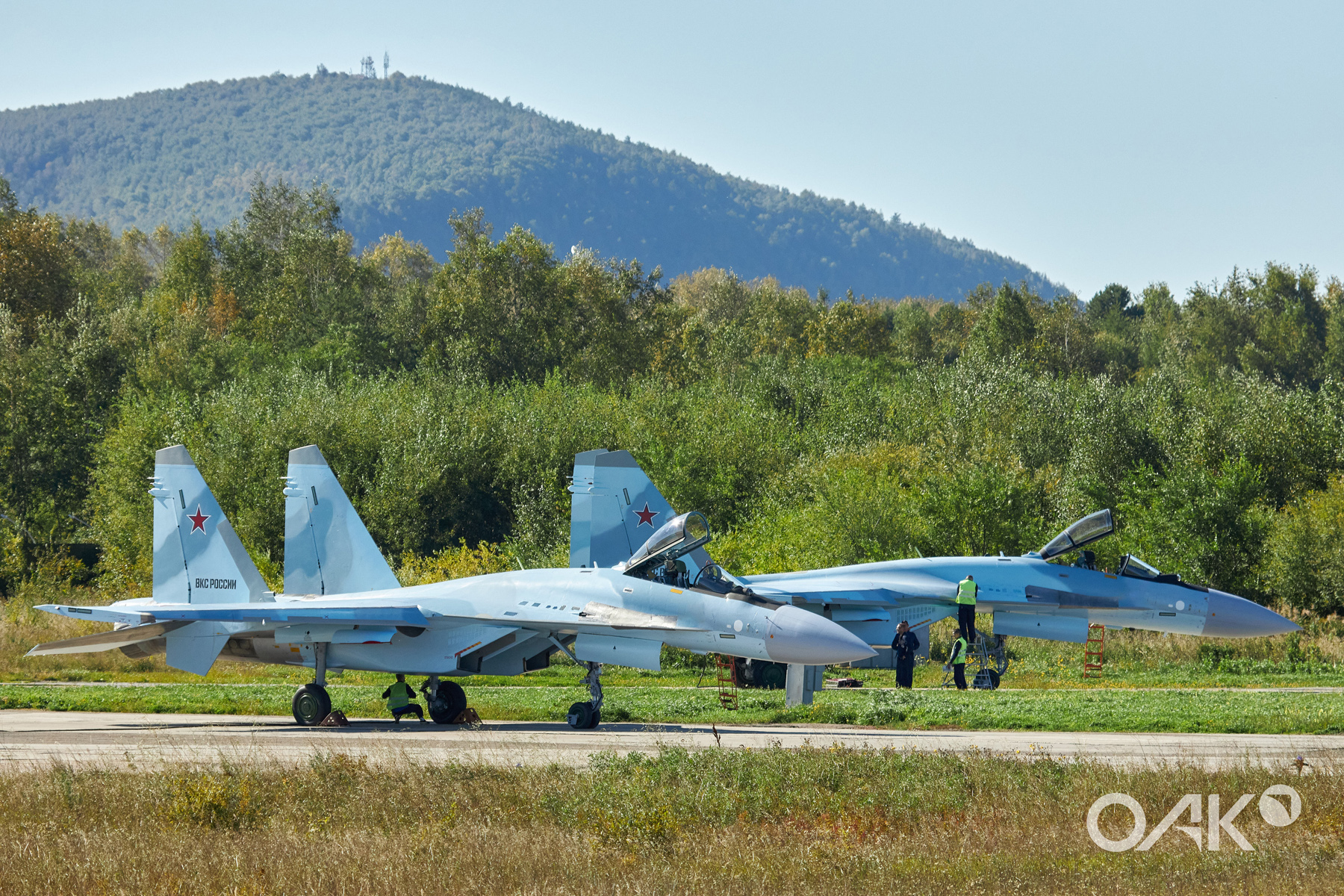
The United Aircraft Corporation (UAC), the parent organization responsible for Sukhoi, officially announced the delivery of three aircraft to the Russian Ministry of Defense, stating that it “completes the implementation of the third contract” for these fighters. Before the end of this year “the plant will also deliver the first Su-35S jets to the ministry of defense under the next, fourth contract,” UAC added.

Privolzhsky Air Base near the city of Astrakhan is the home base of the 185th Combat Training and Combat Application Center of the Aerospace Forces. This is the only formation of its kind in Russia, and it’s tasked with replicating combat conditions, to provide realistic training in combat tactics for fighters and other air defense units. The center’s air component is the 116th Combat Application Training Center of Fighter Aviation, sometimes referred to as the Russian ‘aggressor squadron.’
As you can read about here, aggressor squadrons are designed to expose pilots to high-end training and typically include aircraft, systems, and operators that offer realistic airborne presentations of potential enemy equipment, tactics, and techniques. The aim is to prepare frontline aviators for the kinds of engagements they might encounter in real-world aerial combat.
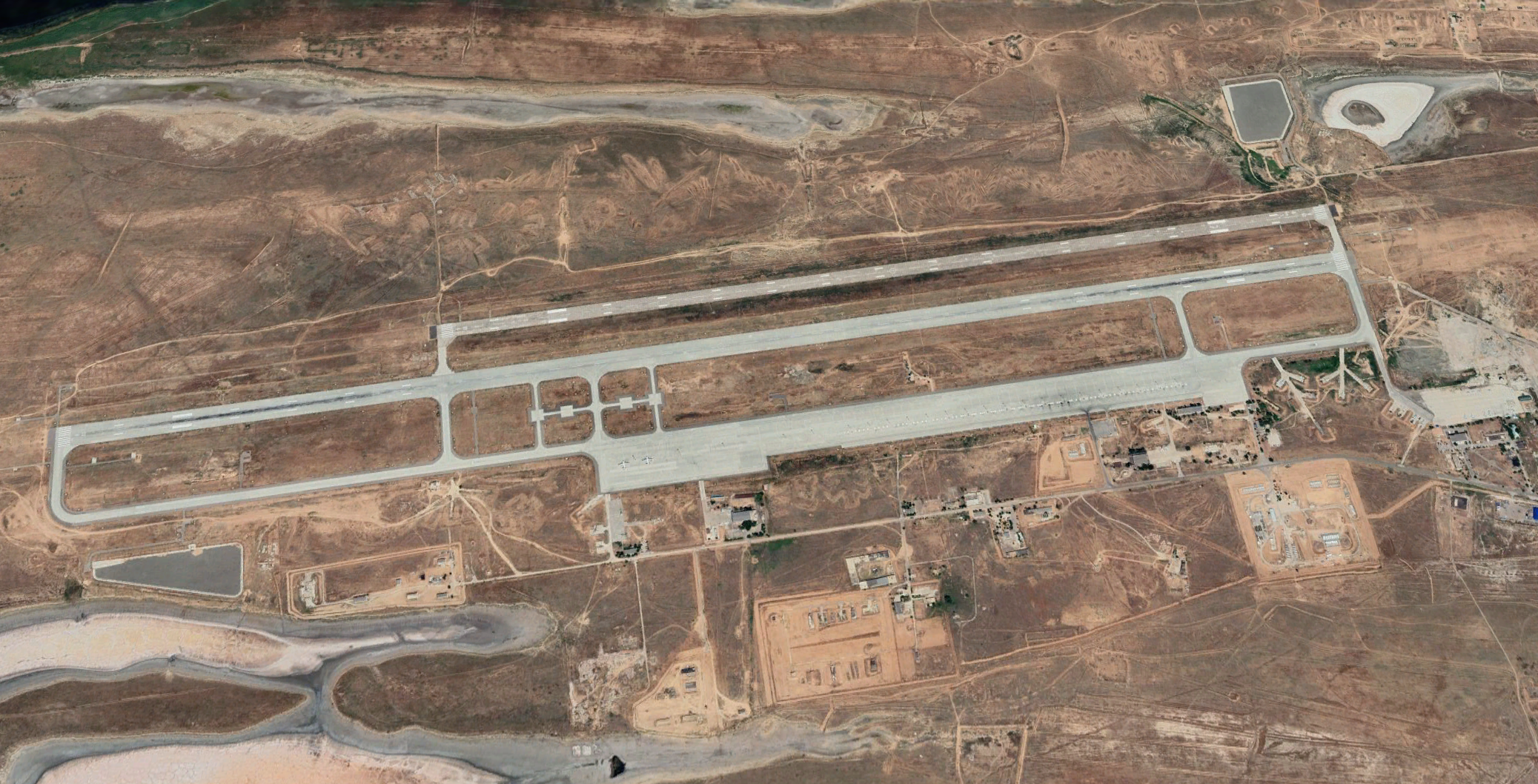
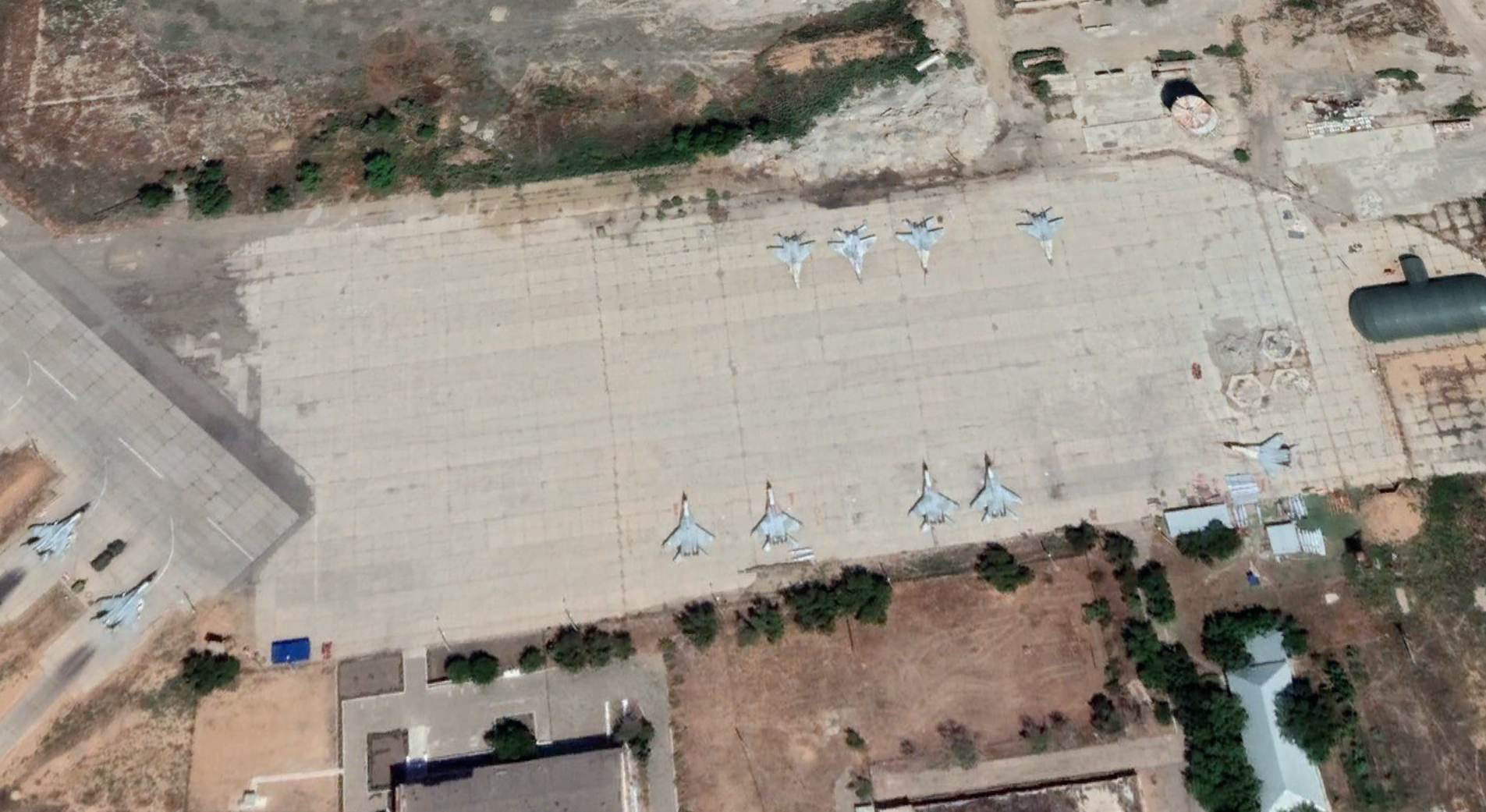
Until now, the 116th Center has flown MiG-29SMT Fulcrum fighters. The MiG-29SMT is an updated Fulcrum, the first examples falling into Russian hands after a squadron of these jets were rejected by an export customer, Algeria. The advanced SMTs were then topped up by another batch built according to Russian specifications. However, the only frontline operator, the 14th Fighter Aviation Regiment at Kursk, has since put its aircraft into storage.

As well as aggressor fighters, the 185th Center is responsible for the 67th Firing Range at Ashuluk (Tambovka), 80 miles north of Astrakhan, along with a number of other units there: the 42nd Surface-to-Air Missile Training Center, radar and radio units, launch sites and control stations for aerial targets, and others. The 2016 incident involving a failed launch by an S-300P series air defense system, seen in the images below, took place at the Ashuluk range.
Two more training areas, Mukhor-Konduy and Telemba, both located near Chita, 2,860 miles away from Astrakhan, are also subordinated to the 185th Center.
The airfield at Privolzhsky operates two squadrons of MiG-29SMT fighters; the first MiG-29 Fulcrum-series jets arrived here as long ago as 1989. There are no reports that aircraft and crews from the base have participated in the war with Ukraine, but it cannot be ruled out. In autumn 2017, MiGs and aircrews were deployed to Syria to take part in the Russian operation there.
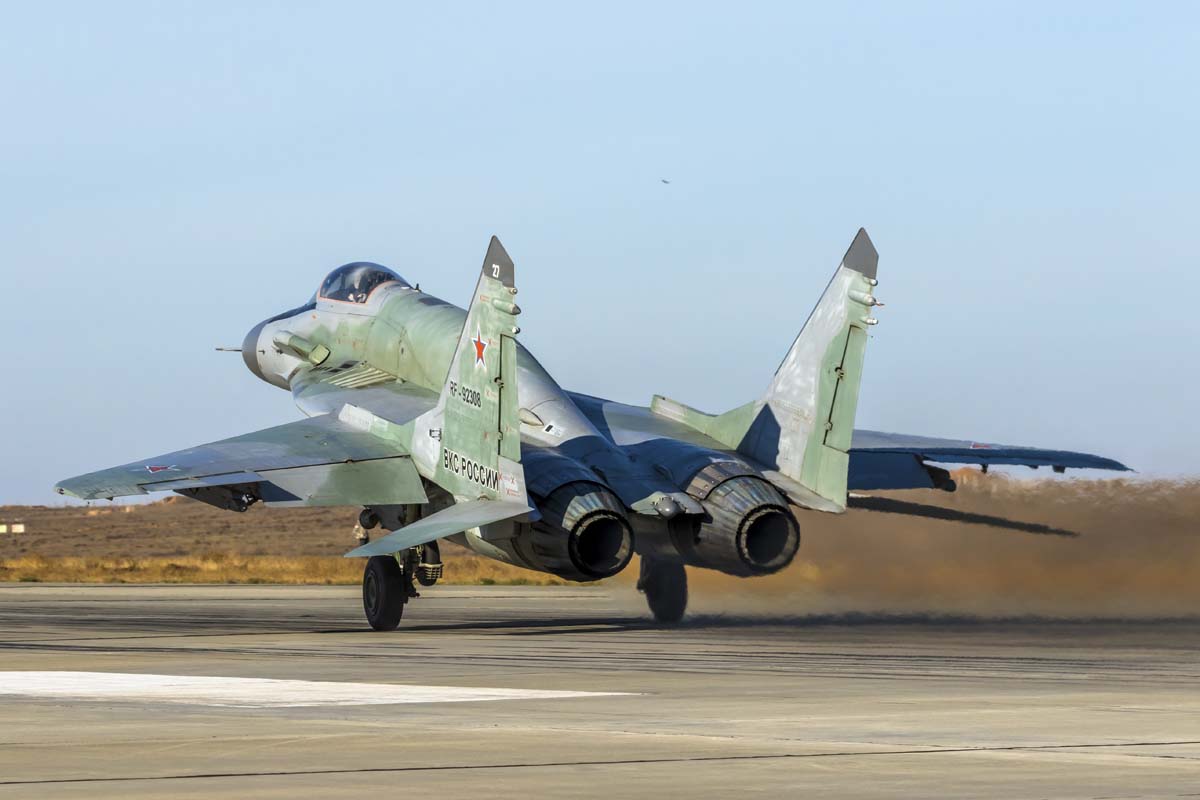
The three Su-35S fighters that arrived on September 10 are the first Flankers of any kind for this unit.

To recap, the first order for the Su-35S was placed by the Russian Ministry of Defense in August 2009, covering 48 fighters. This was followed by a second contract for 50 fighters in December 2015. On February 12, 2014, the first squadron of 12 Su-35S jets was officially inducted into its first operational unit, the 23rd Fighter Aviation Regiment (23 IAP) at Dzyomgi Air Base near Komsomolsk-on-Amur. The last fighters from these two contracts were delivered in November 2020.
It’s unknown when the third order was placed, but it was likely in 2020. Either way, it was small, covering only six aircraft. The first three, with the red code numbers ‘58,’ ‘59’ and ’60,’ were handed over to the Lipetsk crew training center in December 2021. The second three, with the blue code numbers ‘01,’ ‘02’ and ‘03,’ are the aircraft that recently arrived in Astrakhan.

The fourth order for 20 fighters was placed with UAC by the defense ministry in August 2020. It calls for the delivery of aircraft between 2022 and 2024. Therefore, under all four orders, the Komsomolsk-on-Amur plant is scheduled to eventually deliver a total of 124 Su-35S fighters to the VKS.
The VKS currently operates Su-35S fighters within two regiments in the Eastern Military District (the 22 IAP at Tsentralnaya Uglovaya and the 23 IAP in Dzyomgi) and two regiments in the Western Military District (159 IAP in Besovets and 790 IAP in Khotilovo). Some aircraft are also at the military test center in Akhtubinsk, at the crew training center in Lipetsk, and now also at the ‘aggressor squadron’ in Astrakhan.
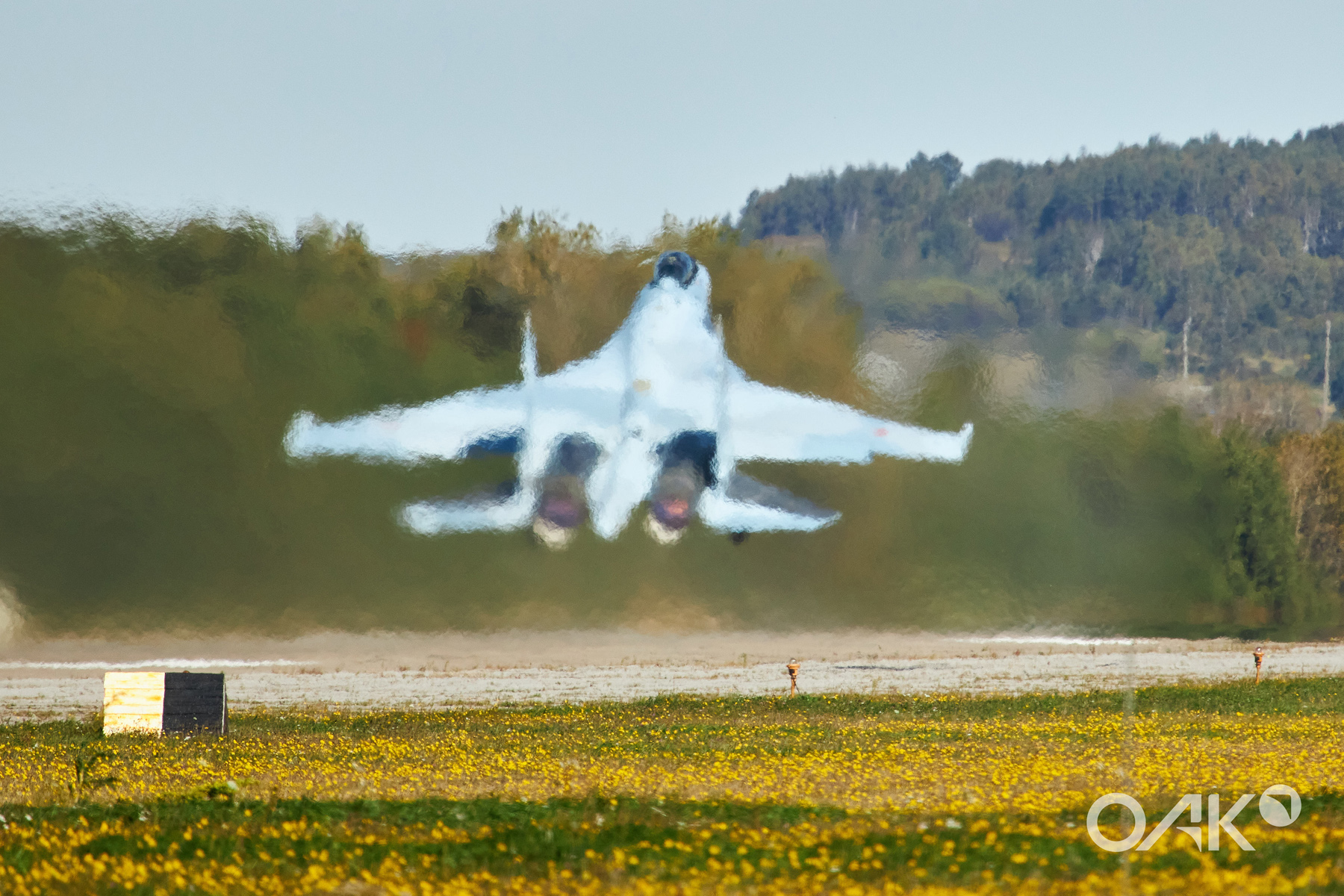
Examples of the Su-35S have also been handed over to the Russian Knights (or Russkiye Vityazi) aerobatic display team at Kubinka Air Base near Moscow. The first four fighters for the team arrived at Kubinka on November 12, 2019, followed by the second four in June 2020. The Su-35S, with its 3D thrust-vectoring capabilities, has long been known for its maneuverability thanks to multiple eye-catching demonstrations, some of which are of debatable actual utility in combat.

Su-35S in the war in Ukraine
Since the Kremlin’s invasion of Ukraine on February 24, 2022, the Su-35S has played a prominent role, being used for both air defense and offensive air-to-ground missions. The latter have included suppression of enemy air defenses (SEAD) sorties armed with Kh-31P series (AS-17 Krypton) anti-radiation missiles. Air-to-ground missions have also utilized heavy standoff weapons such as the UPAB-1500B glide bomb.
In its air-to-air role, Su-35S fighters involved in the Ukraine war have been noted carrying a range of weaponry, including medium-range radar/infrared-guided R-27 (AA-10 Alamo), active radar-guided R-77-1 (AA-12 Adder), and short-range infrared-guided R-73/74 (AA-11 Archer) missiles.
On other occasions, Su-35S fighters have been configured simultaneously for anti-radar and air-to-air missions.

Another important store that’s been used by the Su-35S in the conflict is the pair of wingtip pods associated with the Khibiny-M electronic warfare suite. You can read more about these pods and their capabilities here. While an electronic jamming capability of the kind offered by the Khibiny would be of significant benefit to an aggressor squadron, photos of the jets so far show that they are fitted with wingtip missile rails rather than electronic warfare pods.
While it’s unclear what kind of success the Su-35S has had in combat over Ukraine, it’s been confirmed that at least one example was shot down near Izyum, around 75 miles southeast of Kharkiv, in eastern Ukraine, around April 3. The cause of the loss is unconfirmed, but it reportedly fell to ground-based air defenses, with the pilot ejecting and being captured.
So far, there have not been any other independently confirmed Su-35S losses, although, especially bearing in mind the heavy attrition that has faced other VKS tactical aircraft, it would seem more than likely.
Meanwhile, accounts from Ukrainian Air Force personnel, at least, paint a picture of generally cautious employment of the Su-35S by the VKS.
Speaking to The War Zone earlier this year, a MiG-29 pilot known only by the callsign “Juice” observed that that the Su-35S was the most dangerous threat he and his fellow airmen faced, based on its combination of powerful radar, with a long effective range, and active radar-guided air-to-air missiles, which are lacking from the Ukrainian armory. Another key factor is the availability of A-50 Mainstay airborne early warning aircraft to monitor air activity over Ukraine from their forward base in Belarus and provide target data to fighter jets.
What was notable, however, according to Juice’s account, was the unwillingness of VKS Su-35S pilots to engage in aerial combat unless they enjoyed a considerable numerical advantage.
“You know you need just two or four Su-30s or Su-35s against [Ukrainian MiG-29s and Su-27s], but 12? Sometimes there are even more, sometimes we saw around 24 jets in the air near the border, trying to shoot our jets.”
This certainly seems like overkill, not just due to the technological edge provided by the Su-35S, but the fact that the VKS in general should be intimately familiar with the Ukrainians’ MiG-29s and Su-27s, and how best to defeat them.

It’s notable, too, that the Ukrainian Air Force trained hard against simulated Su-35S and Su-30SM threats in advance of the current conflict. A significant element of exercises with the U.S. Air Force, particularly the Clear Sky series of drills, involved F-15Cs of the California Air National Guard replicating the tactics and performance of these high-end Russian Flankers.
Juice explained that, despite the technological mismatch, in simulated combat against F-15s, the Ukrainians were “sometimes pretty successful, just using our flexibility and creation of non-standard decisions.”
This kind of creative thinking and ability to use unorthodox methods to gain an advantage is something that, traditionally, has been notably less obvious in Russian (and before that Soviet) airpower doctrine. For air defense fighters, many training scenarios are heavily reliant upon ground-controlled interception (GCI) tactics, involving ground-based sensors and command posts, something that’s not available to anywhere near the same degree in a combat theater.
This is an issue that’s been brought up in the intense discussion about the failings of the VKS over Ukraine and, especially, its inability to establish a meaningful level of air superiority in the face of stubborn resistance from the Ukrainian Air Force and ground-based air defenses.
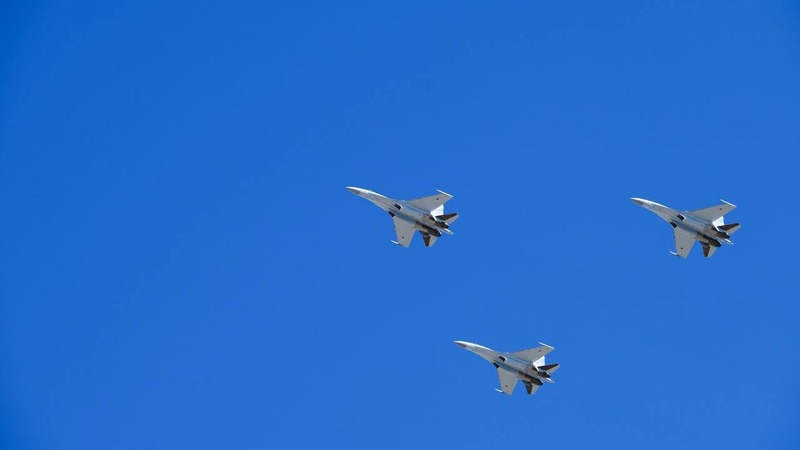
“Running joint engagement zones in which combat aircraft and SAM [surface-to-air missile] systems can engage enemy forces simultaneously in a complex environment without friendly-fire incidents is hard,” Justin Bronk, the Research Fellow for Airpower at the Royal United Services Institute (RUSI), observed, in the first days of the war. “It requires close inter-service cooperation, excellent communications, and regular training to master.”
Overall, the conflict in Ukraine has likely further highlighted the need for high-end aggressors like the Su-35S, as well as providing evidence of a need to modernize training programs, more generally.
Russian training shortfalls
It’s fair to say that, while the VKS has introduced some highly capable tactical aircraft to its inventory in recent years, training has generally failed to keep pace with wider developments in air combat. Overall, the training regime appears less disciplined and less advanced than in leading Western and other air forces.
Multiple accounts state that Russian fighter pilots likely record an average of fewer than 100 flying hours annually, less than half that of most of their American or British counterparts. There are also mismatches in the flying hours across Russia’s different military districts, although the pilots at Privolzhsky are reported to have the highest flying time in the entire tactical aviation branch, with more than 120 hours per year.

At the same time, Western pilots have access to the kinds of high-fidelity simulators and additional training aids that are much harder to find in Russia and they typically also enjoy better cockpit ergonomics and are provided with weapons that are easier to use.
Meanwhile, the kinds of exercises that VKS aircrew can expect to take part in fall well short of the complexity and rigor of their Western equivalents. While fighter pilots practice air combat maneuvering and live-fire drills, the latter typically involves fairly ‘canned’ scenarios in which they shoot air-dropped targets. ‘Multinational’ exercises feature limited foreign participation and, like the Aviadarts series, often focus on using unguided air-to-air weaponry, something that’s only rarely seen in equivalent Western drills, let alone in combat.
Footage from the 2018 edition of the Aviadarts exercise, including Su-35S jets armed with unguided rockets:

Other training events have been punctuated by embarrassing mishaps, including a Su-35S that shot down a Su-30M2 during simulated close-air-combat training in 2020, and a MiG-31 Foxhound interceptor that blasted its wingman out of the sky during a live-fire mission in 2017. In both cases, there were at least suggestions that pilot error was to blame for the accidental shootdowns.
Thanks to the long-running Russian air campaign in Syria, reportedly over 90 percent of VKS aircrews have been exposed to combat operations, with some of the most experienced pilots having accumulated more than 400 combat sorties, prior to the Ukraine war, according to the Russian Minister of Defense Sergei Shoigu. However, these have been flown without any genuine threat in the air and with only shoulder-launched SAMs on the ground. Therefore, while there is actually no shortage of combat experience in the VKS, the value of this — at least prior to the current war in Ukraine — is highly questionable.
A typical Su-35S mission from the Syrian campaign — escorting a transport aircraft carrying Russian Minister of Defense Sergei Shoigu:

With this in mind, it’s clear that there is a place for adversary training to provide a higher degree of realism in air-to-air training. While the MiG-29SMTs operated by the 185th Center are relatively potent, they lack the performance, sensor, and weapons capabilities of the Su-35S — they are also hampered by a fairly short endurance. Combined with the more experienced pilots that are undoubtedly available to the unit, the new Su-35S aggressors will be much better suited to challenging frontline pilots. However, those flying the Su-35S on the front line themselves will not benefit to quite the same degree, without the additional challenge of a dissimilar aggressor opponent.
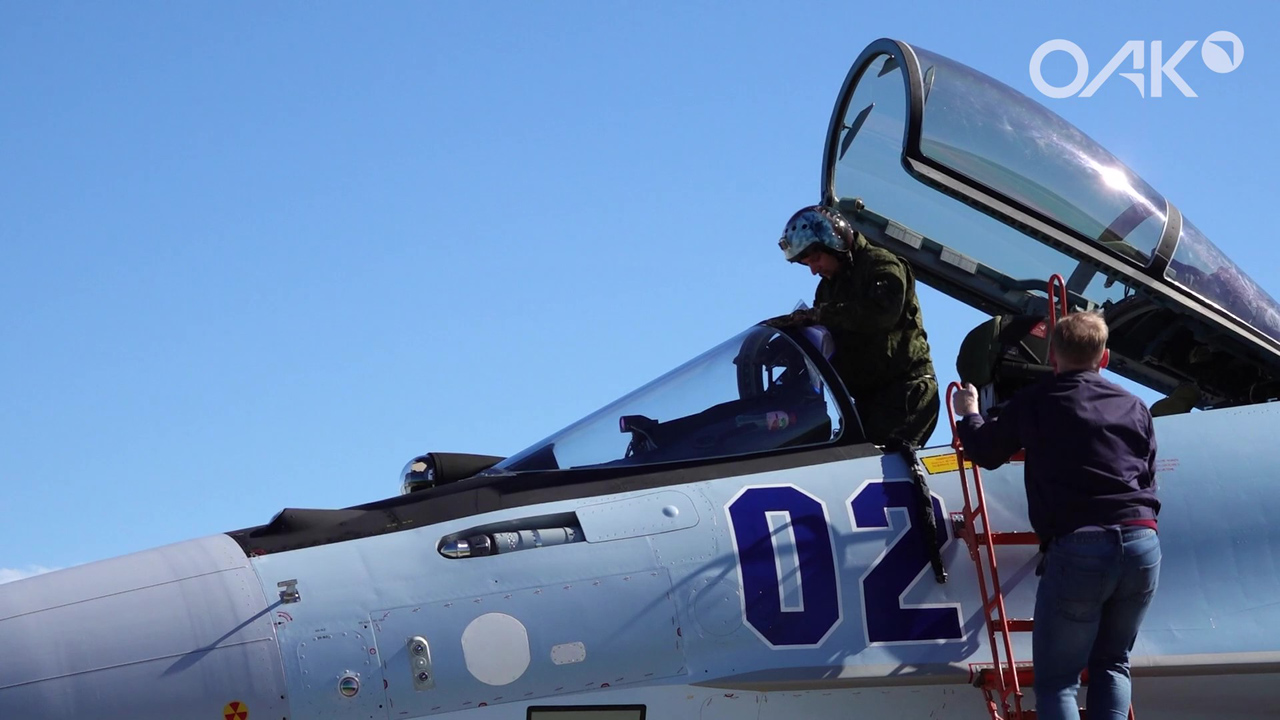
In adversary air programs around the world, there is currently a huge demand not only for advanced platforms to push pilots and aircraft to their limits but also for meaningful numbers of aircraft to generate enough sorties and offer numerically superior opposition. Having just three Su-35S jets added to the flight line at Privolzhsky Air Base may represent a leap in capability compared to the MiG-29SMT, but this tiny number also reflects the much more limited ambitions of Russia’s fighter pilot training effort.
Contact the author: thomas@thedrive.com
